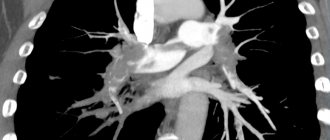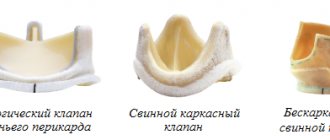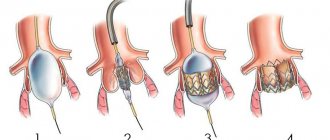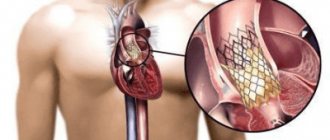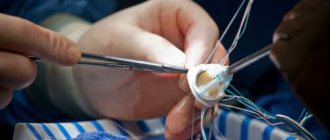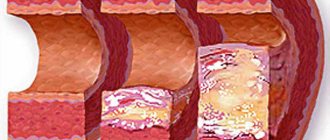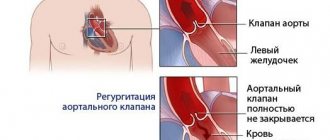Valve transplant surgery
The degree of development of cardiac surgery today makes it possible to extend the life of a patient with severe cardiac pathology by more than 20 years. Congenital or acquired heart defects are corrected surgically using replacement or reconstruction of valves and vessels.
The heart, altered by defects, functions under overload, and its sections increase in size. Due to heart failure, internal organs suffer. The patient's life is under constant threat due to decompensation - depletion of the heart's ability to supply the body with blood.
Valves prevent the reverse movement of blood in the pulmonary and systemic circulation. Their surgical correction is carried out in case of irreversible structural changes, when proper blood flow in one direction is impossible.
Heart valve replacement is performed in the following cases:
- severe stenosis, i.e. narrowing of the hole that cannot be widened by reconstruction;
- valve insufficiency due to salt deposition, ulceration, fibrosis, sclerosis, wrinkling;
- disturbances in the dynamics of the valves due to sclerosis of the chordae.
Most often, the mitral and aortic valves are replaced. They are more susceptible to sclerosis and infectious diseases, which are accompanied by inflammation and tissue deformation, than the tricuspid and pulmonary ones.
Contraindications to the operation are:
- patient refusal to replace the valve;
- severe disease of other organs, which may worsen during surgery;
- blood incoagulability;
- the impossibility of correcting a vice due to its neglect.
The operation is performed on an open heart in specialized cardiac surgery centers. This is a complex intervention in which the organ is stopped, and blood circulation is carried out by special equipment without involving the heart muscle. The heart is cooled during the operation. This protects it from hypoxia.
The postoperative period is quite long due to the large volume of intervention and the long duration of anesthesia. A vertical scar remains on the chest after cutting the chest.
Important. The mitral valve is replaced in this way, since it is located inside the heart. When replacing the aortic, minimally invasive technology of endovascular prosthetics is used. It does not require general anesthesia and is performed on a beating heart.
A guidewire with a mini-structure is inserted through the femoral artery or a small incision in the chest. After removing the damaged valve, a new mechanism is precisely installed in the right place.
Rehabilitation after endovascular prosthetics is much faster. The patient spends less time in the hospital, and recovery occurs earlier than after open surgery.
Mitral Valve Replacement
I'm interested in everything
, yes, this amount includes everything. This is the price for Romanian citizens, with insurance. If without, the price is about 25,000..We looked for information through friends and others. So we left... The day before yesterday we had a consultation with a doctor who will operate. This is in Iasi
Dad is also covered by insurance, because he is a citizen of the Russian Federation.
2 days before the operation, he underwent general tests, and before that he underwent a full examination. I already learned from patients that in order not to run around, it’s even better to do a full tomography, this is all done in one day, and not 2 weeks, the difference in price in the end was small. On the day he was admitted, they did a coronary angiography under anesthesia, he was warned the day before not to eat or drink, after this procedure, it is strictly forbidden to get up, ice is applied for the first 3 hours after, then heaviness and lies there until the morning. Before the operation itself, they talk with the patient and warn that they will intubate so that the patient is adequate for this procedure. After resuscitation, drainage came from the sternum, a catheter was inserted, he was on IVs around the clock for 5 days. The urinary catheter was in place for about 1.5 days after resuscitation. Also, everyone apparently has pacemakers hanging on their chests, and the wires lead straight into their chests. Then we needed the drug Albumin, a bottle costs about $80, they gave us 3 drops, they gave us the first one, then we bought it ourselves. on the second day I lifted him up, he couldn’t lie still, massaged his body and the sooner the better to start breathing exercises, the doctors show how. On the third day, we ordered a postoperative bandage - a corset, it is much more convenient for him to sit up and sit down. If you order it yourself, they should recommend the size for you, since we took it according to chest volume and they brought us 2 pieces. and they said that as a rule, everyone takes a size larger, and that’s what happened with us.
Also, do all movements strictly symmetrically !, do not allow any asymmetry in movements, this is due to the sternum, so that the stitches do not tear and the ribs do not move, otherwise a repeat operation. On the sixth day they hired a massage therapist, although the doctor said that there was no urgent need and this was an extra expense, what can I say - the massage we gave him and what a pro does and + there is not only a massage but also teaches how to walk and breathe correctly, the difference is big - it is 1000 times thanked this guy. Eat broth for two days, then gradually everything. I don’t know about everyone else, but due to the fact that he hadn’t eaten for 3 days and practically didn’t drink, he was so hungry that once, when he was able to get up, he stole our chocolate bar, just like a child when he left the room, he climbed into the refrigerator... and it was funny and so pity.
Now let's hope that defibrillation helped. I read that if the arrhythmia remains, then a pacemaker is sewn in, the doctors did not say anything about this, while we are waiting.
As for the valve, according to the quota, the Russian one is free, but the doctors said that the American one is better, I just didn’t have time to find the difference between better and worse, and then I tried to find reviews, but it didn’t work, and I don’t want to, because I can’t change it. so they trusted the doctors and paid 95,000 rubles to the cashier for an American one.
If you are given any post-operative and rehabilitation recommendations in the future, I will be grateful if you write about them here or in a personal message.
I wish you to go through all stages without complications! Good luck
Inpatient rehabilitation
The patient spends the first day in intensive care, then, if the dynamics are favorable, he is transferred to the general ward. Rehabilitation in the hospital after open heart surgery lasts at least 7-10 days. During this period, the patient is recommended to:
- breathing exercises aimed at restoring lung function (inflating a balloon, coughing) to avoid postoperative pneumonia;
- light tapping back massage to increase blood circulation and phlegm discharge;
- make movements with your arms, legs, clench and unclench your hands;
- if possible, get up and move for faster restoration of organ function.
With endovascular intervention, the patient spends 3-4 days in the hospital.
Contraindications to implantation
Prosthetics are not recommended for:
- acute circulatory disorder;
- decompensated heart failure with EF<25-20%;
- exacerbation of asthma;
- diabetes and kidney failure;
- intoxication due to viral or infectious diseases;
- liver failure in the stage of decompensation.
The choice of prosthetic method depends on the patient’s case, his main diagnosis, the expected scale of surgical intervention and the verdict of the cardiac surgeon. If there are contraindications for urgent surgery, supportive therapy is required to prepare the patient.
Drug therapy during the rehabilitation period
A patient who has undergone valve replacement surgery regains strength and gets used to a new lifestyle for 6-12 months. As a rule, a person experiences a surge of strength and improved well-being. Ordinary actions are now performed easily and are not accompanied by fatigue.
During intervention, a valve made of artificial materials or biological tissues is installed. The body reacts to the foreign body by increasing the production of platelets. To avoid thromboembolism, the patient must take anticoagulants - warfarin, clopidogrel.
With a mechanical valve this is a lifelong appointment, with a biological valve it is 3 months. We need constant monitoring of the INR - international normalized ratio (ITI, PTV). Its recommended value is 2.5-3.5. There is a danger of hemorrhage, so it is forbidden to change the dosage of the drug. Only an observing cardiologist can do this.
Drug therapy includes:
- taking anticoagulants;
- antibiotic treatment of rheumatic diseases;
- treatment of arrhythmia, angina pectoris, hypertension;
- taking diuretics.
Important. This will help avoid the main complications of valve replacement - thromboembolism and bacterial endocarditis - inflammation of the heart muscle.
Rehabilitation and possible complications
After successful prosthetics, the patient remains in intensive care for two days. This is necessary to restore strength after anesthesia, anesthesia and sedation. The length of stay in intensive care is two to three days, followed by three to four weeks in the hospital. During this time, the wound on the sternum heals and the body adapts to hemodynamics after prosthetics. Throughout the entire period, the doctor regularly measures blood pressure and evaluates the condition of the heart and suture using ultrasound.
After a minimally invasive replacement, recovery takes no more than seven to ten days. Considering the small size of the wound, healing occurs faster, with less severe pain.
Rehabilitation in the postoperative period includes:
- Limit physical activity in the first week.
- Gradual increase in motor activity during the first two weeks.
- Prescribing drug therapy to prevent thrombosis, blockage of the valve by a blood clot.
- Individual selection of exercise regimen after hemodynamic restoration.
- Special diet and monitoring of the condition.
The most common concerns after prosthetics are:
- general weakness;
- sometimes dizziness;
- headache;
- aching pain in the suture area;
- periodic heart pain;
- swelling of the legs;
- sleep disturbance.
As a rule, such complications are not permanent and disappear within four to five weeks after surgery.
If the condition worsens, contact a cardiologist or surgeon. Early screening prevents the surgical consequences of heart valve replacement and improves the patient's life.
Visit to a cardiologist
Valve replacement improves heart function, but requires lifestyle changes and constant monitoring of coagulation levels. The first visit to the cardiologist is a month after the operation. Necessary:
- take a blood test;
- urine;
- take an ECG.
If the results are good, the next visit is made in a year. You need to focus on how you feel; you may need to consult a doctor more often. If the monthly PTI analysis is unsatisfactory, there are deviations up or down, only a cardiologist can make an adjustment.
conclusions
The prognosis for prosthetics is favorable. Surgical elimination of heart defects, stenosis and heart valve insufficiency reduces the risk of disability, death from heart failure and significantly improves well-being. After surgery, the risk of death is associated with thrombosis of large vessels or the site of the implanted valve. It is extremely important to follow the doctor's recommendations and prescriptions. Rehabilitation in a sanatorium or cardiology hospital helps maintain good health for many years after surgery.
Types of implants
Today, an Israeli heart surgeon can choose a mechanical or biological heart valve implant.
In the first case, endoprostheses made of various materials can be used - for example, metal, graphite, silicone. Also, in the design of artificial valves, various closure mechanisms are used - in the form of petals, valves or balls. The main advantage of artificial heart valves is that they are practically not subject to wear, and their disadvantages include the likelihood of blood clots, which can cause thromboembolism. To avoid this, the patient will have to take anticoagulants .
Among biological transplants, several types are also distinguished. Thus, the pericardium of a horse or pig can be a source of xenografts. The allograft is obtained from the dura mater taken from the patient himself. Such prostheses take root much easier, cause fewer complications, but can wear out quite quickly.
What procedures need to be completed before surgery?
Due to the fact that heart surgery is serious and complex, the patient requires a complete preoperative diagnosis.
Mandatory diagnostic procedures prescribed by Israeli cardiac surgeons before heart surgery include:
- urine and blood tests,
- chest x-ray,
- echocardiography,
- electrocardiography,
- cardiac catheterization
- angiography.
When the surgeon receives the test results, he makes a conclusion whether the operation can be performed. In preparation for surgery, medications and physical therapy
. The doctor will definitely ask you to get rid of bad habits, this will increase the body’s endurance and help the patient endure the operation more easily.
Side effects
After surgery, in addition to general weakness of the body, you may experience a deterioration in appetite or sleep disturbance. Visual disturbances, loss of concentration on an object, swelling of the lower extremities and some others may occur. All these sensations are exclusively temporary and will pass within one to two months. Having repaired your heart, you will not be able to harm other organs in your body, since the medicine at Ilyssa Medical Group is at a high level. Heart valve replacement in Israel will allow you to operate your body as if you were 16 again, without worrying that the operation will cause complications inside or outside the body.
Be sure to tell your attending physician about any of your feelings and problems that arise when you meet. Remember also that after a month you will need to undergo a routine examination, re-take tests and undergo research procedures: chest X-ray, ECG and EchoCG.
For more information, contact the specialists of the Ilyssa Medical Group medical center.
Operation technique
Plastic surgery is performed only in a hospital setting, in an office specially equipped for the operation. If it is carried out using an endoscope, there will be monitors in the room to monitor the process. First, the patient is taken for premedication, and sedatives and hypnotics are injected into a vein. After falling asleep, the plastic surgery itself begins.
The surgeon makes an incision on the front wall of the chest, then the breast bones. They open access to the heart layer by layer. A cardiopulmonary bypass machine (ACB) is connected. This device will simulate the work of the lungs, saturating the blood with oxygen while manipulations are performed on the heart. Tubes from the blood pump are connected to the chambers of the heart; blood will flow to it, be saturated with oxygen and disperse throughout the body. Then the surgeon begins the main stage of work, it will depend on what exactly happened to the valve.
For mitral insufficiency, a so-called annuloplasty is performed. A plastic ring is placed near the valve opening to restore lumen and normal blood flow.
The sashes can be connected manually - this is suture plastic. If stenosis is diagnosed, a commissurotomy is needed. This is the manual separation of fused leaflets in a valve. Stenosis surgery is also carried out without connecting to the artificial blood pressure pump; it is performed through a small hole between the ribs on the left side. During the procedure, the patient's condition is monitored using medical equipment. Blood pressure and respiration are constantly measured. When all the work is completed, the AIK is turned off, and the surgeon sutures the opening sites layer by layer. External seams are treated with an antiseptic and a tight bandage is applied. Before taking the patient out of the operating room, his condition is checked again.
In the first days after the operation, the patient is constantly monitored by doctors. He remains in the hospital for another 5-7 days, depending on the complexity of the operation and the speed of rehabilitation. In the first 1-2 days, bed rest and diet are indicated.
Activity is gradually restored under medical supervision. Then the operated patient is discharged, prescribed medications for rehabilitation and a routine examination by a cardiologist and therapist.
Simple mitral valve disorders are resolved using minimally invasive techniques. Several small incisions are made in the chest, into one of which an endoscope, a device with a micro-camera, is placed. The surgeon performs the operation without a strip opening, so after such manipulations the patient undergoes rehabilitation faster.
